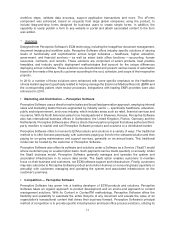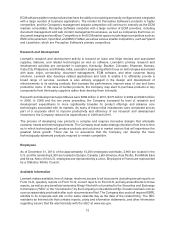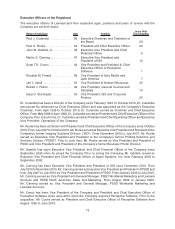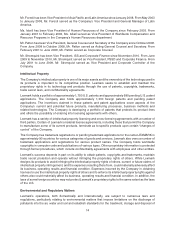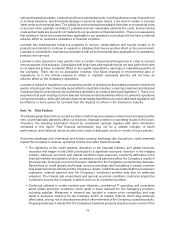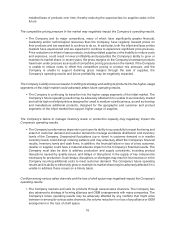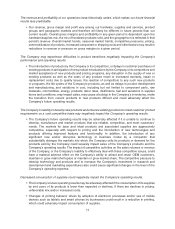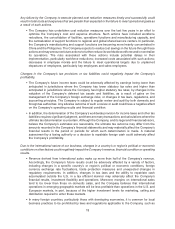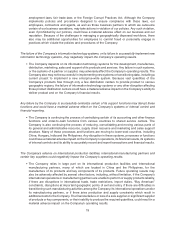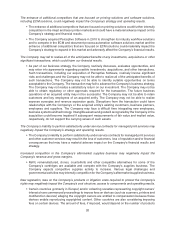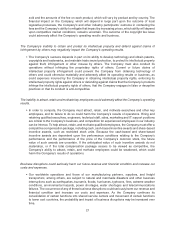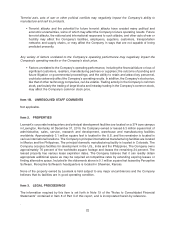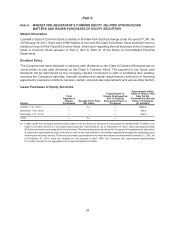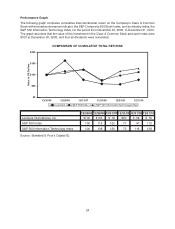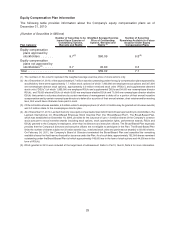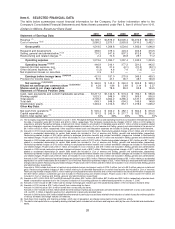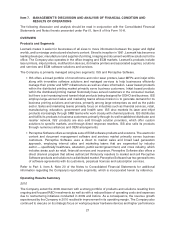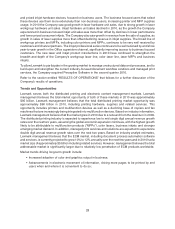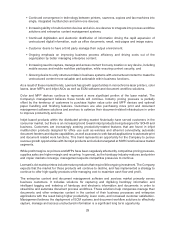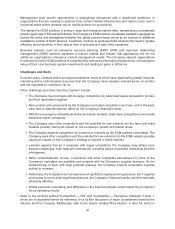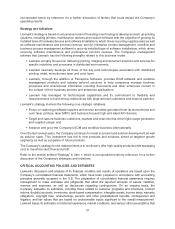Lexmark 2010 Annual Report Download - page 27
Download and view the complete annual report
Please find page 27 of the 2010 Lexmark annual report below. You can navigate through the pages in the report by either clicking on the pages listed below, or by using the keyword search tool below to find specific information within the annual report.sold and the amounts of the fee on each product, which will vary by product and by country. The
financial impact on the Company, which will depend in large part upon the outcome of local
legislative processes, the Company’s and other industry participants’ outcome in contesting the
fees and the Company’s ability to mitigate that impact by increasing prices, which ability will depend
upon competitive market conditions, remains uncertain. The outcome of the copyright fee issue
could adversely affect the Company’s operating results and business.
The Company’s inability to obtain and protect its intellectual property and defend against claims of
infringement by others may negatively impact the Company’s operating results.
• The Company’s success depends in part on its ability to develop technology and obtain patents,
copyrights and trademarks, and maintain trade secret protection, to protect its intellectual property
against theft, infringement or other misuse by others. The Company must also conduct its
operations without infringing the proprietary rights of others. Current or future claims of
intellectual property infringement could prevent the Company from obtaining technology of
others and could otherwise materially and adversely affect its operating results or business, as
could expenses incurred by the Company in obtaining intellectual property rights, enforcing its
intellectual property rights against others or defending against claims that the Company’s products
infringe the intellectual property rights of others, that the Company engages in false or deceptive
practices or that its conduct is anti-competitive.
The inability to attract, retain and motivate key employees could adversely affect the Company’s operating
results.
• In order to compete, the Company must attract, retain, and motivate executives and other key
employees, and its failure to do so could harm the Company’s results of operations. Hiring and
retaining qualified executives, engineers, technical staff, sales, marketing and IT support positions
are critical to the Company’s business, and competition for experienced employees in our industry
can be intense. To help attract, retain, and motivate qualified employees, the Company must offer a
competitive compensation package, including cash, cash-based incentive awards and share-based
incentive awards, such as restricted stock units. Because the cash-based and share-based
incentive awards are dependent upon the performance conditions relating to the Company’s
performance and the performance of the price of the Company’s common stock, the future
value of such awards are uncertain. If the anticipated value of such incentive awards do not
materialize, or if the total compensation package ceases to be viewed as competitive, the
Company’s ability to attract, retain, and motivate employees could be weakened, which could
harm the Company’s results of operations.
Business disruptions could seriously harm our future revenue and financial condition and increase our
costs and expenses.
• Our worldwide operations and those of our manufacturing partners, suppliers, and freight
transporters, among others, are subject to natural and manmade disasters and other business
interruptions such as earthquakes, tsunamis, floods, hurricanes, typhoons, fires, extreme weather
conditions, environmental hazards, power shortages, water shortages and telecommunications
failures. The occurrence of any of these business disruptions could seriously harm our revenue and
financial condition and increase our costs and expenses. As the Company continues its
consolidation of certain functions into shared service centers and movement of certain functions
to lower cost countries, the probability and impact of business disruptions may be increased over
time.
21


